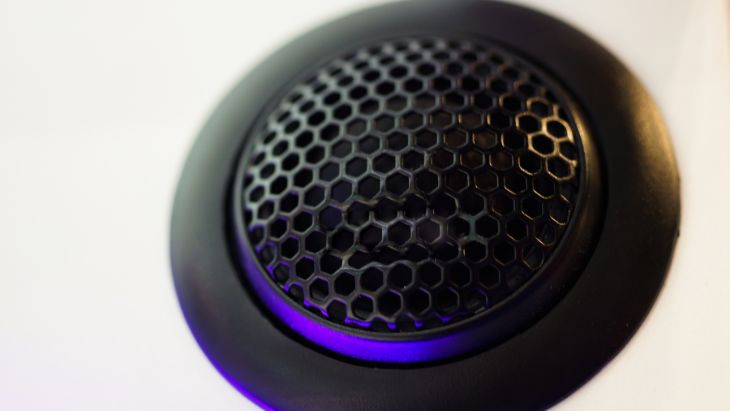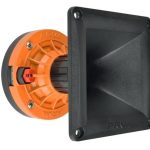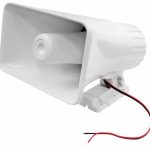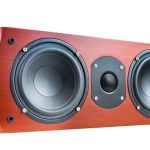Music comprises several sound frequencies. To get the best listening experience, you’ll need a sound system that plays all the frequencies in a soundtrack including low, midrange, and high frequencies. However, different speakers are specially designed to produce sound within a certain frequency range.
Although full-range speakers reproduce full-range frequencies, investing in component speakers will give you the best frequency response for each frequency range. In this case, you’ll need to invest in subwoofers to produce low frequencies, midrange speakers to produce midrange speakers, and tweeters to produce high-range frequencies.
When shopping for tweeters, you’ll come across horn tweeters and dome tweeters. Although they’re both meant to reproduce high frequencies, their design differs significantly. In this article, we’ll discuss horn tweeter vs dome tweeter in detail.
The Basics of a Tweeter

Before we compare horn and dome tweeters, it’ll help to learn what a tweeter is. Essentially, tweeters are small-sized speakers that are specially designed to produce high frequencies. High frequencies are also known as treble. The design behind tweeters makes them produce a high-pitched sound. Producing high-pitched sound requires a driver that can move back and forth very quickly. That’s why tweeters are small-sized and made of a light and highly flexible cone.
Horn Tweeters
Generally, horn tweeters resemble horn loudspeakers. However, horn tweeters are smaller in size. They have existed longer than dome tweeters. Horn tweeters are considered to be more efficient. That’s because horn tweeters produce a higher sound output than dome tweeters. The design behind a horn tweeter keeps the cone area large while maintaining a small overall size.
Additionally, the design behind horn tweeters allows them to disperse sound in a more controlled manner. They allow for enhanced directivity of the sound output. This makes them suitable for direct high frequencies toward a specific listening position.
Pros of Horn Tweeters
Generally, horn tweeters are used in several applications including car audio, home audio, and PA systems. They offer benefits such as:
- They withstand heavy usage and some are great for use in outdoor applications
- They deliver high volume with minimal distortion
- Great efficiency
- Dispersion control for more directional highs
Cons of Horn Tweeters
Horn tweeters come with shortcomings such as:
- Can be fatiguing
- High coloration
- Often more expensive than dome tweeters
Dome Tweeters
Dome tweeters are the most commonly used tweeters for car home audio and car stereo. They’re made using materials like silk, aluminum, titanium, and plastic. Just like their name suggests, they feature a dome-shaped design.
Dome tweeters are classified under two main categories including soft dome tweeters and metal dome tweeters. To start with, soft dome tweeters have a voice coil that moves within an electromagnetic field. They’re known as soft dome tweeters because they’re made of soft materials such as silk or fabric. Their soft materials are more dampened than metal dome tweeters, thereby producing smoother highs. Also, their soft materials allow for enhanced sound accuracy and wider sound dispersion.
Metal dome tweeters are made with metallic materials such as titanium and aluminum. They’re able to output more detailed highs than soft dome tweeters. However, their hard materials make them stiffer such that they sound a little harsh at high volume.
Pros of Dome Tweeters
- Wider sound dispersion
- Top-quality highs
- Less prone to distortion
- Often more affordable than horn tweeters
Cons of Dome Tweeters
- Their stiffness may create a ringing effect
- They need more power to run
Which Tweeters Are Better Between Horn and Dome Tweeters
Both horn and dome tweeters are great for certain applications. If you want modern tweeters that offer well-balanced highs, wider dispersion, and are affordable, then consider choosing dome tweeters. On the other hand, if you’re looking for more efficient tweeters that can output more directional highs, then consider choosing horn tweeters.
Michael Evanchuk is a San Francisco-based sound engineer with 20 years’ experience installing, troubleshooting, and repairing commercial, automotive, and household sound equipment. Evanchuk owns an auto stereo center, where he offers highly competitive car audio installation and repair services. He has written dozens of articles on different sound engineering topics, all of which have been published in leading journals, blogs, and websites.





